The State of Data in Life Sciences
“In the Digital Age, Our Data Is Currency” – Forbes Technology Council 4
We are in the age of “Big Data.” Due to the advent of cloud computing, social media platforms, smartphones, wearables, and IoT (Internet of Things), we are set to generate unimaginable amounts of data. By 2025, the global amount of data is expected to reach 163,000,000,000,000,000,000,000 bytes or 163 zettabytes of data per year. Yet, life sciences organizations are struggling to put their data to good use.5
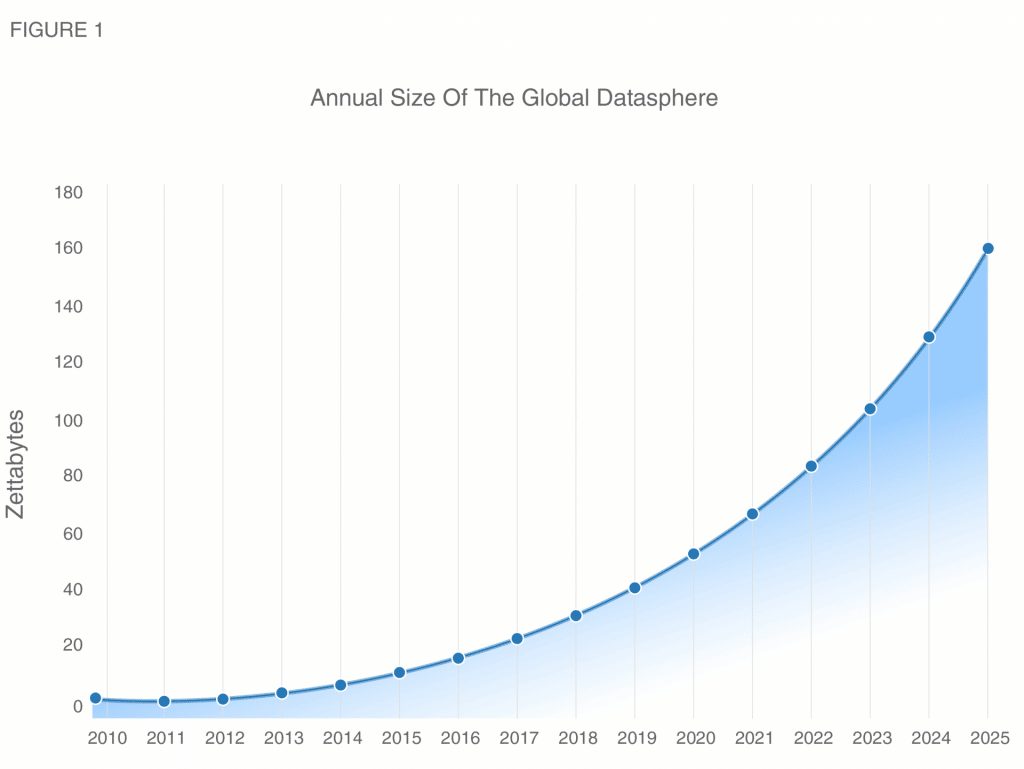
In a recent study by Verndale, 85% of life sciences professionals reported a lack of real-time customer insights as an organizational challenge, despite the large amounts of data generated by the industry.6 A study by Reuters Events conducted in April 2020 painted a similar picture7:
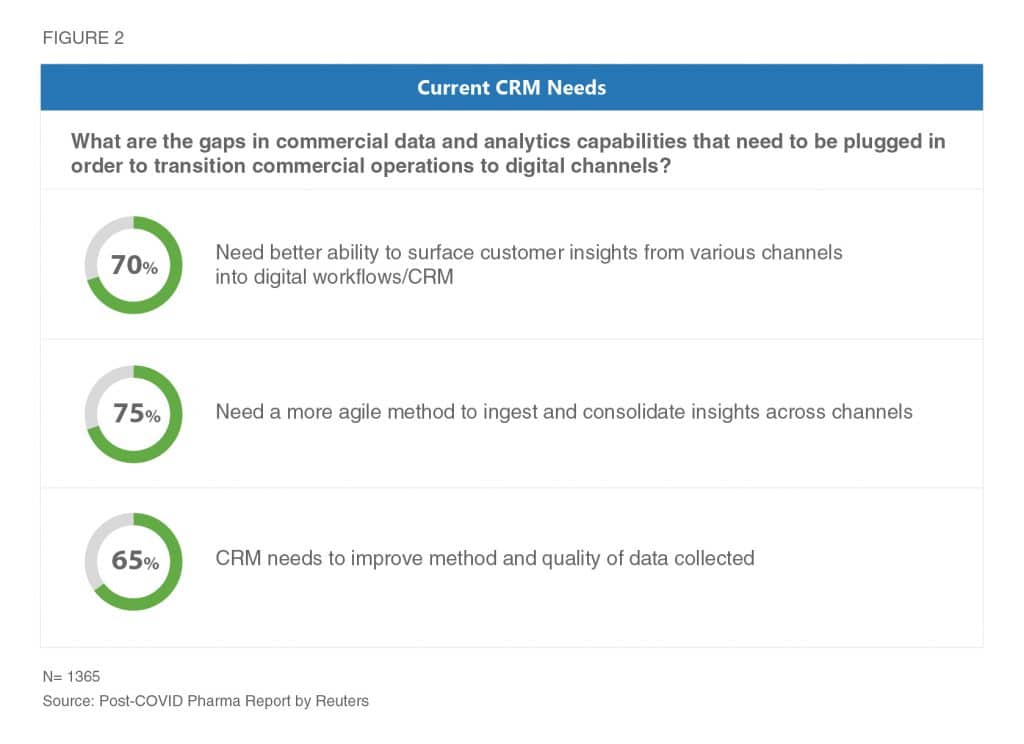
The main reasons behind this disconnect are outdated technological infrastructure and a lack of built-in cognitive services on the backend that ensure all forms of data can be turned into customer insights. According to McKinsey, digital initiatives from life sciences organizations are often fragmented and unable to overcome the barriers presented by inflexible legacy IT systems.3 These same systems that life sciences have relied on for years lead to data silos and disconnected internal communications, making it impossible for organizations to maximize the benefit they can get from their data. As a result, commercial and medical teams are working in silos, unable to build on the valuable insights that each of them gathers. This disconnect across functions leads to a disjointed experience for frustrated HCPs and patients.
Currently, most life sciences organizations are relying on patchwork infrastructure consisting of add-on technologies and solutions. Even though each of the solutions employed serves a specific purpose, having a plethora of add-on technologies leads to complicated integrations, increased costs, and more headaches for the IT department. More importantly, as these tools are not interoperable, they exacerbate the problems caused by data silos. That’s why leaders in this space will need to address the root cause of this problem and upgrade their tech infrastructure to allow for a better data-driven approach. Without a significant effort in data cleansing, integration, and management, the effective use of advanced features such as AI-powered analytics and intelligent automation will not be possible.8
Interoperability and Unification of Data
Customer Experience Is the New Competitive Battlefield – Gartner 9
The current goal of life sciences organizations is clear: offer HCPs and patients seamless customer experience (CX). Achieving that level of CX requires frictionless hand-off of customer data between departments. In other words, it requires interoperability, which, according to Deloitte, will become a linchpin to the healthcare industry by 2040.10 The benefits of interoperability expand far beyond better customer experiences. In fact, interoperable platforms and data have the potential to transform nearly all aspects of the healthcare system and ultimately drive better health outcomes (Figure 3).10 The same benefits apply to life sciences organizations and their ability to positively impact HCPs and patients.
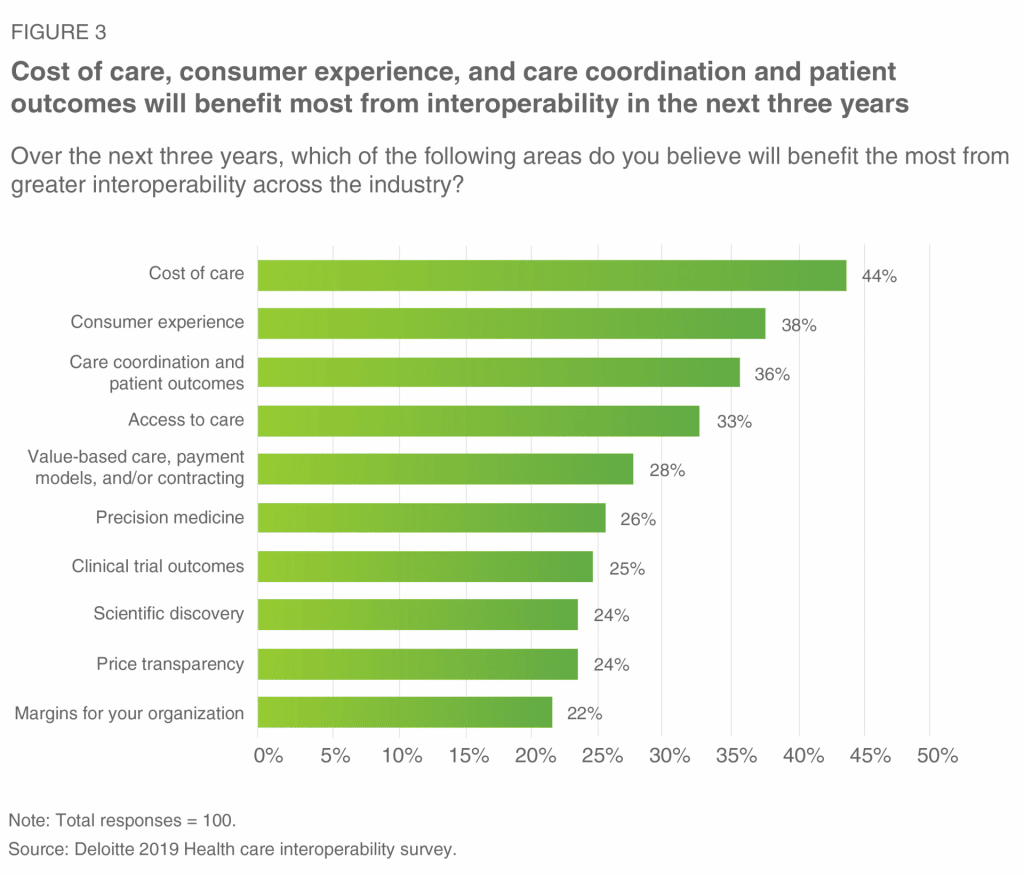
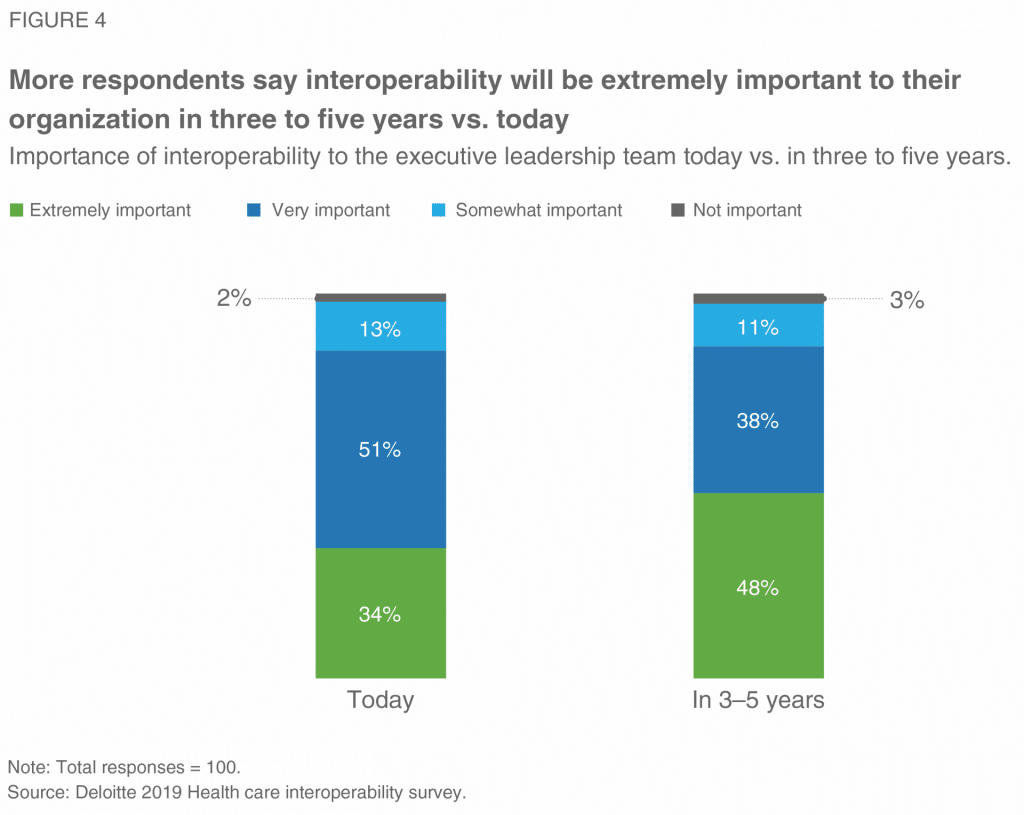
A prime example of the benefit of interoperability for life sciences organizations is the collaboration between Eli Lilly and Microsoft.11 By relying on the unified Microsoft ecosystem of tools and applications, the R&D department at Eli Lilly was able to achieve real-time collaboration between different teams and increase productivity as well as the effectiveness of their drug discovery efforts.11
In addition to interoperability, achieving frictionless collaboration between departments necessitates a unified view of the customer, which, in turn, depends on trusted and unified customer data.12 The importance of unified customer profiles cannot be overstated, and CX leaders in other industries are already well aware of its tremendous value. In a recent study by Forrester, 73% of director level and above respondents said that a unified customer profile is critical to improve their use of data and analytics, among other benefits (Figure 5).13 This same study concluded that firms effectively using a unified customer profile are 2.5 times more likely to have increased customer value.13
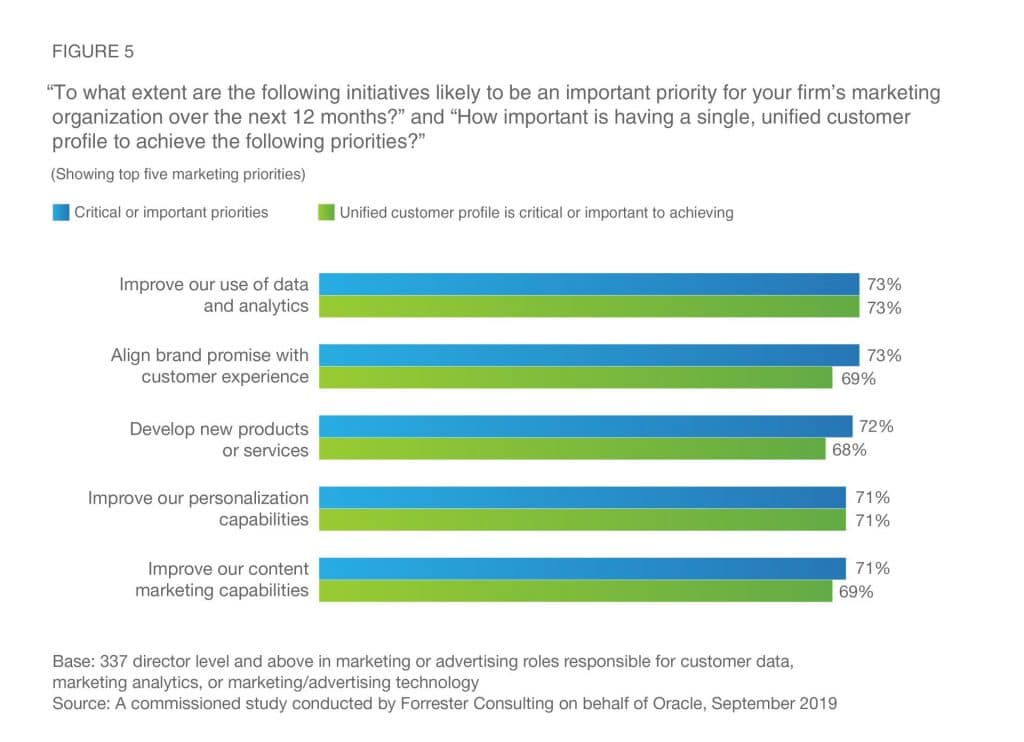
Given that a unified customer profile for all departments by definition requires a unified data system, data silos created by legacy IT systems are an obvious hindrance to offering high-quality CX. As a result, many life sciences organizations are turning to Master Data Management (MDM) solutions in an attempt to pool the data they’re gathering from multiple sources.12 But simply grouping your data in one location will not magically transform your organization into a data-driven powerhouse. There should be significant effort spent to ensure the uniformity, accuracy, stewardship, semantic consistency, and accountability of the official shared customer master data assets, which in turn requires interoperability.12
In summary, it will not be enough for you to look for technologies that solve some of the individual areas you’re looking to improve. An MDM alone or a unified customer profile alone will not be sufficient to empower a data-driven modern workplace, especially if you’re relying on a legacy CRM system. Elena Bonfiglioli, Regional Business Leader, Health and Life Sciences EMEA at Microsoft, summarized it best:
“Digital interactions will be data-driven. If they are going to be data-driven, they will only be successful if there is an underlying interoperability of the solutions employed. There is no other way. We need to come to terms with a shift from a plethora of beautiful point solutions to an integrated underlying platform.” 14
AI Potential and Challenges
“AI is a concise catch-all term that denotes the shift from highly analog decision making to automated, algorithm-based decision making.” – Gartner 15
Most organizations have already dipped their toes in the sea of endless possible AI applications. Despite some notable successes, many AI projects conducted by life sciences organizations were unsuccessful for the same reasons previously mentioned. To effectively deploy intelligent automation and AI capabilities, you require proper data management, cleansing, and integration, which is not possible with the data issues caused by legacy IT systems and complex portfolios of applications.8 Therefore, to reap the benefits of AI, the first order of business should be moving away from outdated models and adopting a unified and interoperable tech stack.
Another hurdle that might explain these fruitless AI initiatives is the lack of proper talent. It’s hard to find individuals who are experts in AI and have a firm understanding of the life sciences industry, its terms and nuances. As a result, most life sciences organizations find their talent and resources fragmented, often across multiple small initiatives, leading to an inability to scale their AI projects.3 When we take into consideration that up to 80% of a data scientist’s precious time is typically spent on sorting out the data, leaving only 20% of their time for actual data analysis, solving the issues caused by legacy CRMs becomes even more critical.16
Despite these challenges, we cannot dismiss the potential benefits of AI. There is no doubt that AI-powered solutions will play a key role in shaping the future of our industry:
- The market value of AI in life sciences was valued at $1.1 billion in 2019 and is estimated to reach $4.89 billion by 2025, registering a compound annual growth rate (CAGR) of around 30% during this period.17
- By the year 2026, Big Data, in conjunction with machine learning in medicine and pharma, will be generating value at $150 billion/year.18
- AI investments are expected to boost revenue by more than 30% over the next 4 years.19
Seeing how life sciences is currently one of the most inefficient industries, with a steady decline in efficiency since the 1950s, focusing on harnessing the potential of AI as soon as possible can be the means for us to turn things around.1 Here’s how AI can help5:
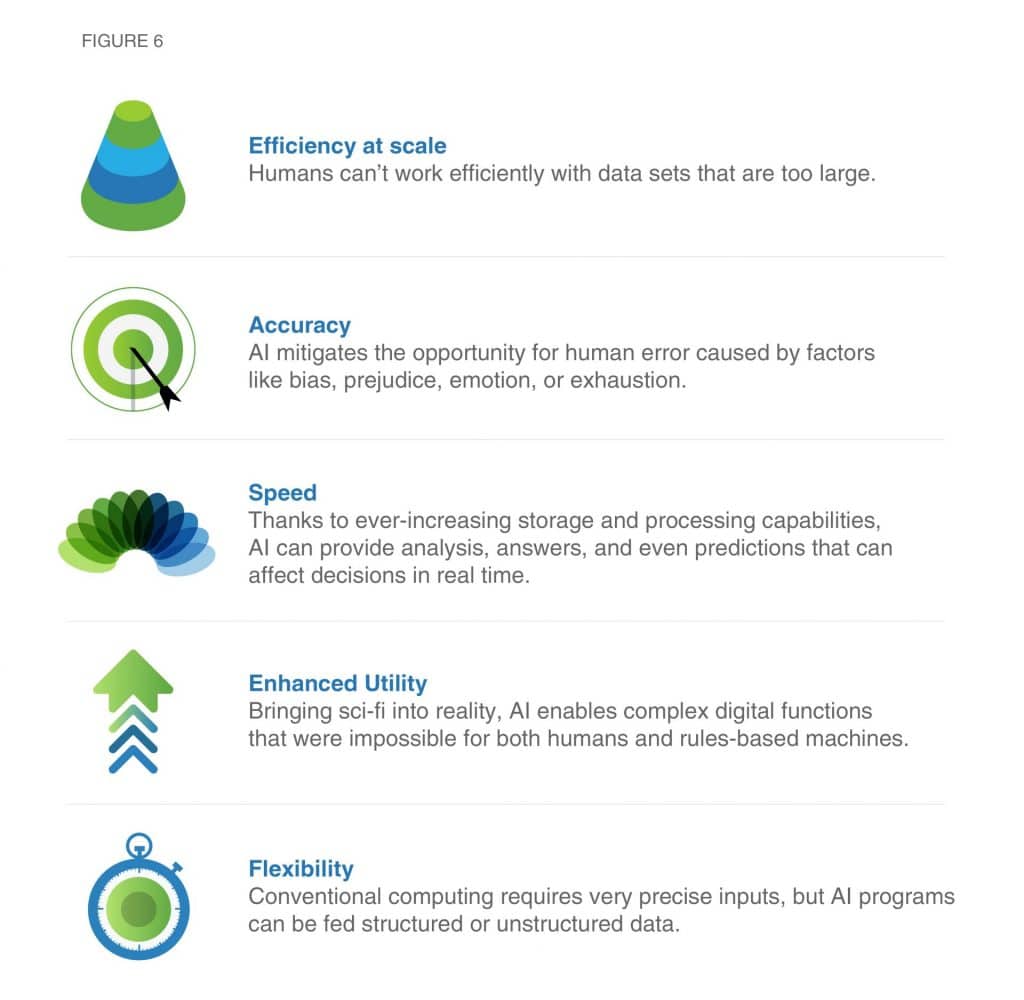
An additional element that can significantly increase the efficiency of life sciences organizations is automation. Automating mundane and repetitive tasks minimizes the risk of human errors and increases the effectiveness of employees, subsequently allowing individuals in the organization to innovate and focus on higher-impact tasks. Automation can also be key to offering personalized CX to HCPs and patients. In fact, according to McKinsey, automation and advanced analytics techniques have already reached the level where personalization at scale is possible.20
Leveraging AI for Life Sciences
AI is one of the most important things humanity is working on. It is more profound than … electricity or fire. – Sundar Pichai, CEO, Google 21
In spite of the obstacles previously mentioned and the bad experiences in implementing past AI projects, there is still a positive outlook among life sciences leaders. According to a study by Accenture, 90% of life sciences executives recognized AI as important in achieving outcomes such as hyper-personalized experiences and new levels of efficiency.19
There are many areas in life sciences and healthcare where AI initiatives can provide a significant advantage, including drug discovery and development, diagnosis, disease prevention, and personalized treatment to name a few. With regard to improving the CX offered to physicians and patients, there are 4 areas where AI-powered solutions can truly shine22 :
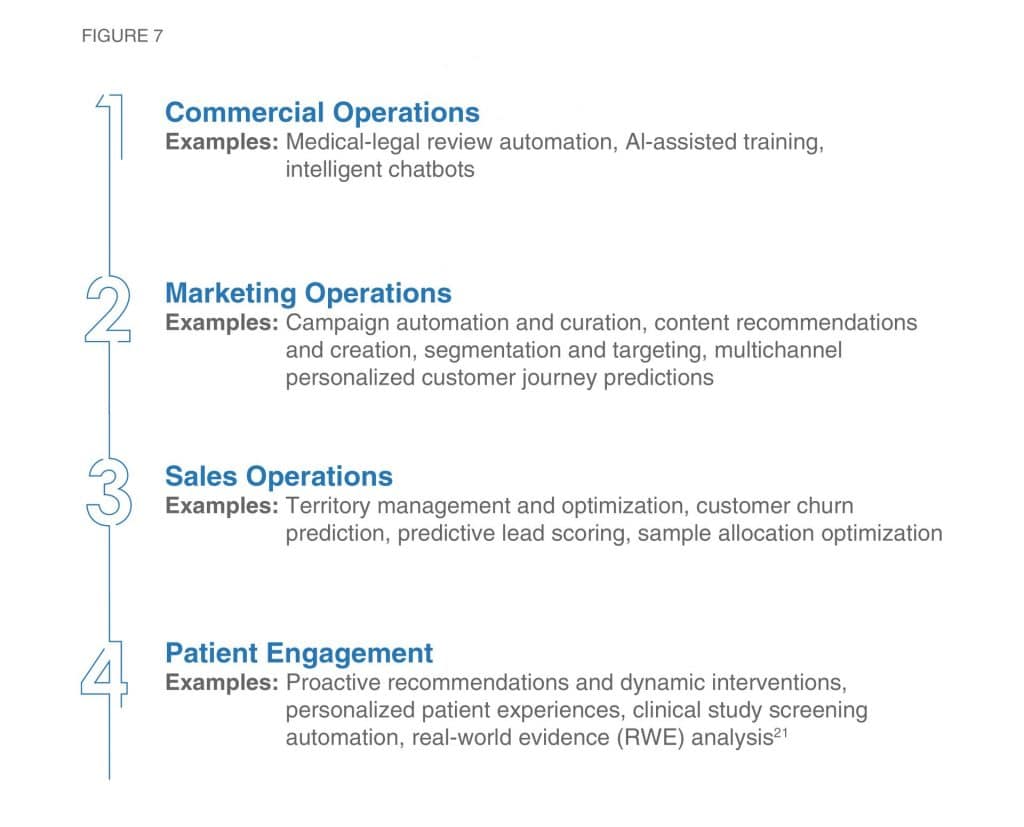
While partnering with tech vendors who offer AI-powered features can have a drastic effect on your CX, extra care should be practiced when evaluating those vendors because not all AI solutions are created equal. Multiple factors come into play when assessing the value of AI-powered technology, one of which is the type and complexity of the algorithms used.
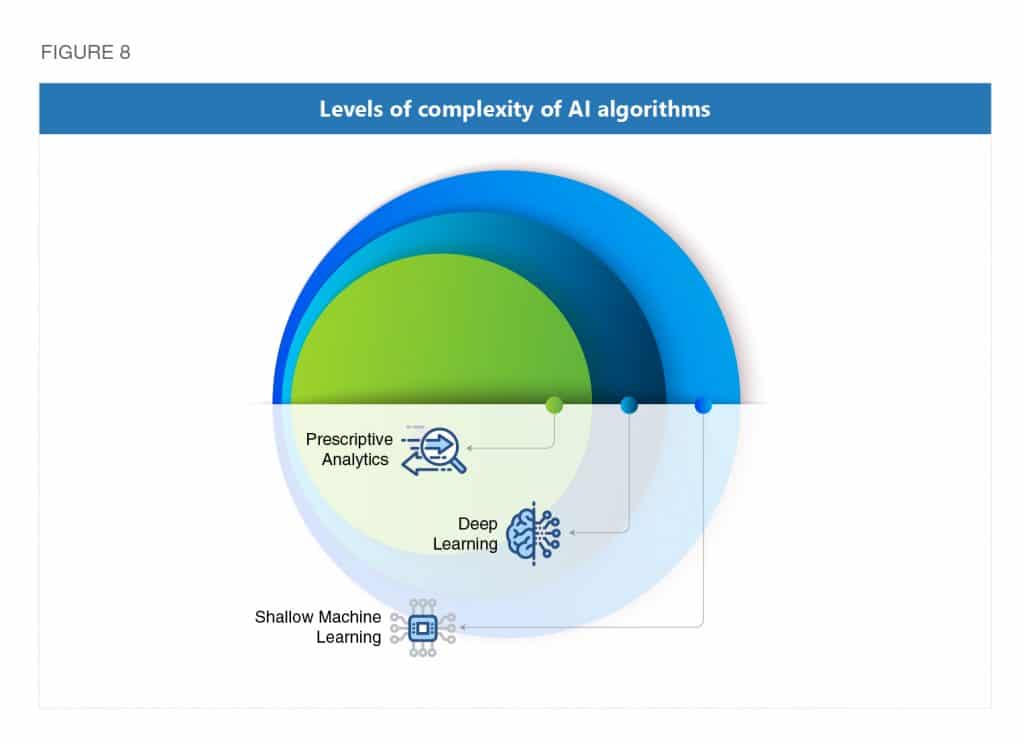
The above figure depicts the levels of complexity of AI algorithms
- Shallow Machine Learning (Shallow ML) is a subset of AI that focuses on learning based on predefined features. Some examples of shallow ML include fraud detection and recommendation systems similar to the ones seen on Netflix or YouTube.
- Deep Learning (DL) is a more advanced type of ML that is inspired by the structure of the human brain and relies on artificial neural networks. Instead of being fed features like shallow ML, DL automatically learns these features along with their weights. However, DL algorithms tend to require massive amounts of data and computational power to be successful. Although DL is inherently more complex, it can be applied to areas where ML can’t be used, such as analyzing medical images (X-rays and MRIs) for an automated second opinion.
- Prescriptive Analytics is the most advanced type of AI and is used to generate predictions (predictive analytics) and initiate proactive decision-making outside the bounds of human interaction. An example of prescriptive analytics would be self-driving vehicles.
It’s important to note that the type of AI doesn’t necessarily determine the relevance or effectiveness of a solution; it’s equally important that the right type of AI is used for the problem it’s trying to solve. While evaluating new technologies, it is also important to understand if the algorithms have been trained for life sciences use cases to get the most out of the platform from the get-go. A combination of these cognitive services will likely be the recipe for scalability depending on the problem an organization is looking to solve:
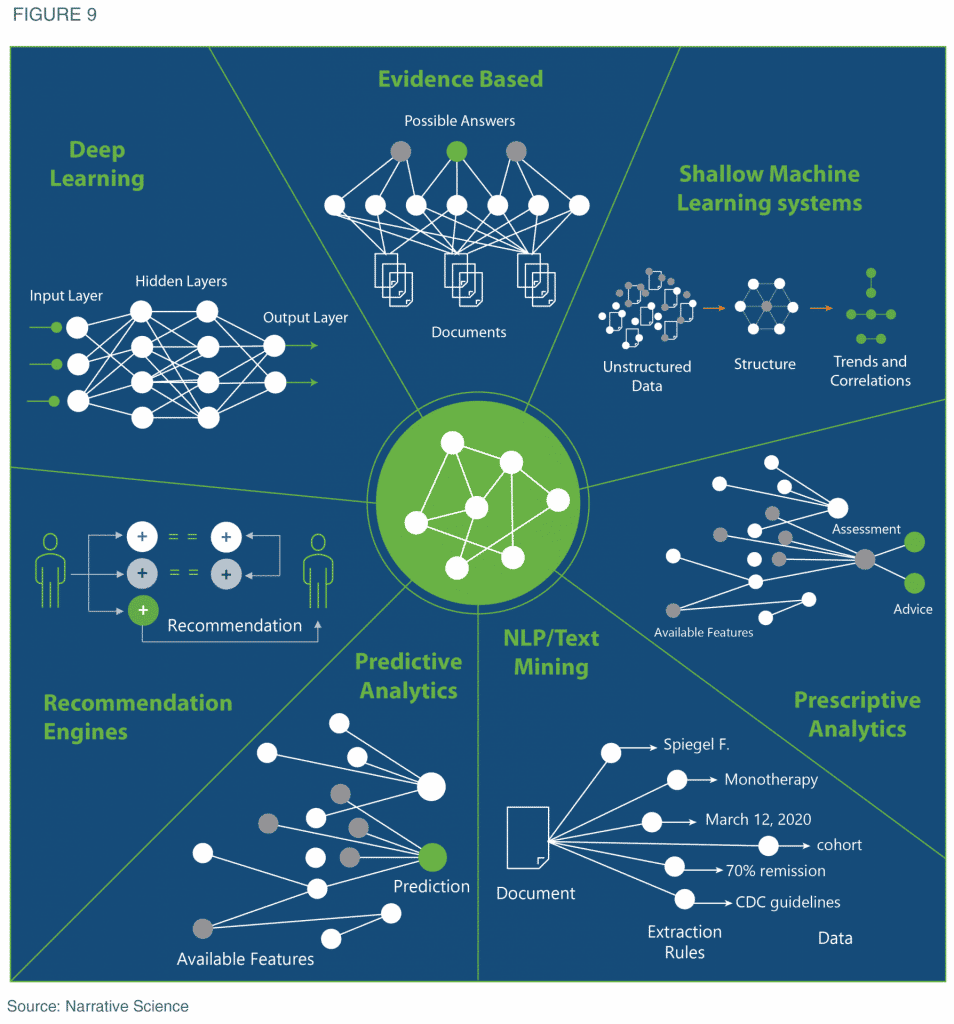
The combination of the life sciences data sets used to train algorithms, the level of sophistication of the cognitive service, and the solution’s integration with the rest of the ecosystem can significantly affect the value of an AI-powered solution as it directly impacts the quality of the suggested actions. For that reason, offerings such as the “Next Best Action” do not always live up to their hype. Recommendations generated by a rules-based algorithm relying on a siloed channel database would not be regarded as “intelligent” insights by a sales representative in the field. On the contrary, it would result in costly unidimensional recommendations that could have easily been predicted by the rep.
For example, a sales or medical representative receiving a recommendation to send an email to a physician may be based on siloed and fragmented data, making the recommendation unidimensional and likely predictable by the rep.
Herein lies the importance of partnering with the right tech vendors in the life sciences space. When you start evaluating AI-powered systems that can elevate the efficiency of your representatives and the overall CX you are offering, look for solutions that:
- help you move toward a unified data system
- deliver robust predictions based on real-time data
- offer recommendations that are backed by sufficient explanation to guide decision-making
Omnipresence, the Life Sciences CXM
Leading organizations in all industries are winning by delivering proactive, unified, and intelligent experiences for each community of customers they engage with. None of these concepts are new. What is different today is that the global pandemic together with the limitations created by siloed, transaction-oriented applications are revealing significant cracks in the foundations. These cracks are probably exacerbated by people, processes, and strategy challenges rooted in outdated methodologies.
Omnipresence is a CXM platform built specifically for life sciences in a strategic partnership with Microsoft. Omnipresence provides the 5 pillars necessary to catalyze the successful post-COVID-19 and “next normal” CXM strategy: a common data model for the customer and patient information, omnichannel planning, omnichannel journey execution, 360° insights, and personalization at scale on a unified technology stack. Without such a modernized, CX-oriented technology stack, organizations may continue to struggle with the time-consuming and fragile integration and orchestration-heavy transformation programs, which, more often than not, underachieve their business objectives. With Omnipresence, organizations can reclaim their resources to reinvest in truly elevating customer experiences.
